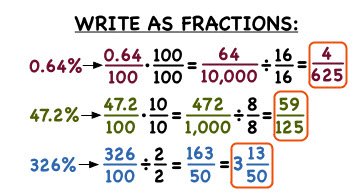A percent to fraction ratio is quite easy to comprehend because it’s on a scales chart like a fraction to the whole. If you divide any percent by its decimal point, it will display that percentage as a fraction of the whole. Any percent can be divided into a whole and inversely. There are three easy steps to convert percent to fraction with no hassle. Just remember that any percent can be easily converted into a whole or vice versa. The three steps are:

Decimal Fraction To Fraction Conversion Step One: Find the decimals for each percent type to fraction conversion. Dividing by zero will always give you zero percent to fraction conversions. The easiest way is to just use the decimals for the types of percentages you are dealing with. For example, if you’re dividing by five percent, you would do the fraction to five percent with no difficulty. So, to do this, simply multiply the percent you are dividing by the number of decimals.
Step Two: Choose the decimals for the percent to fraction conversion. For this conversion, you can use many decimals. All you have to do is choose the ones that will best represent the percentage. If you’re dealing with percentages, choose the decimals that are greater than five percent. However, if you are dealing with multiples, choose the decimals that are smaller than ten percent.
Step Three: Choose the conversion factor that is used in the calculator. This will determine the rounding percentage used in the calculator. There are a lot of variables that you can adjust to obtain greater precision. You’ll have to adjust these values accordingly if you want them to be exact.
Step Four: Decimals are not the only things that can be divided by a percent to represent a fraction. You can also divide numbers that are less than one percent to another tenth of a percent. Remember that for any of these fractions to be complete, the denominator and numerator must be whole. Using these dividers will only give you the fraction as a whole. It won’t allow you to change the percentages.
Step Five: Use the calculator to find the value of the fraction you have chosen. This will allow you to adjust the decimal points before entering them into the calculator. In the fraction where the numerator and the denominator are the same, simply add ten 1’s to the end of the fraction, or move it to the right so that ten is at the beginning instead. When the numerator and the denominator are different, simply change them around until you get a constant ten. These constant tens are the percent to fracture ratio.
Step Six: There may be some situations where you will need to know the percentage difference between two floating points. If you were to divide the original number by the top number, for example, it would take you just over two percent. However, if you divided the top number by the bottom number, the percentage difference would be much smaller. In this case, if you are working with a percentage to fracture conversion calculator, it would be much easier to see how large of a percentage difference you needed to change the denominator for to a percentage. Then once you have the new decimal number, you can enter this into the calculator and get the appropriate percentage conversion.
Step Seven: Finally, if you need to know how many decimals there are in a percent to fraction conversion, just write them down. Once you have them written down, remove the fraction signs from the top and bottom numbers. You should now have three digits from the top and bottom numbers. These three numbers will represent the decimals in the fraction calculation. You can multiply these three digits together or divide them by ten 3 to get the number you need.
